Best Practices for Local Sections
Kara Sniegowski, Education Manager | TLT Guest Editorial April 2012
Our expert panel talks about current and future members—how to get ’em, how to retain ’em.
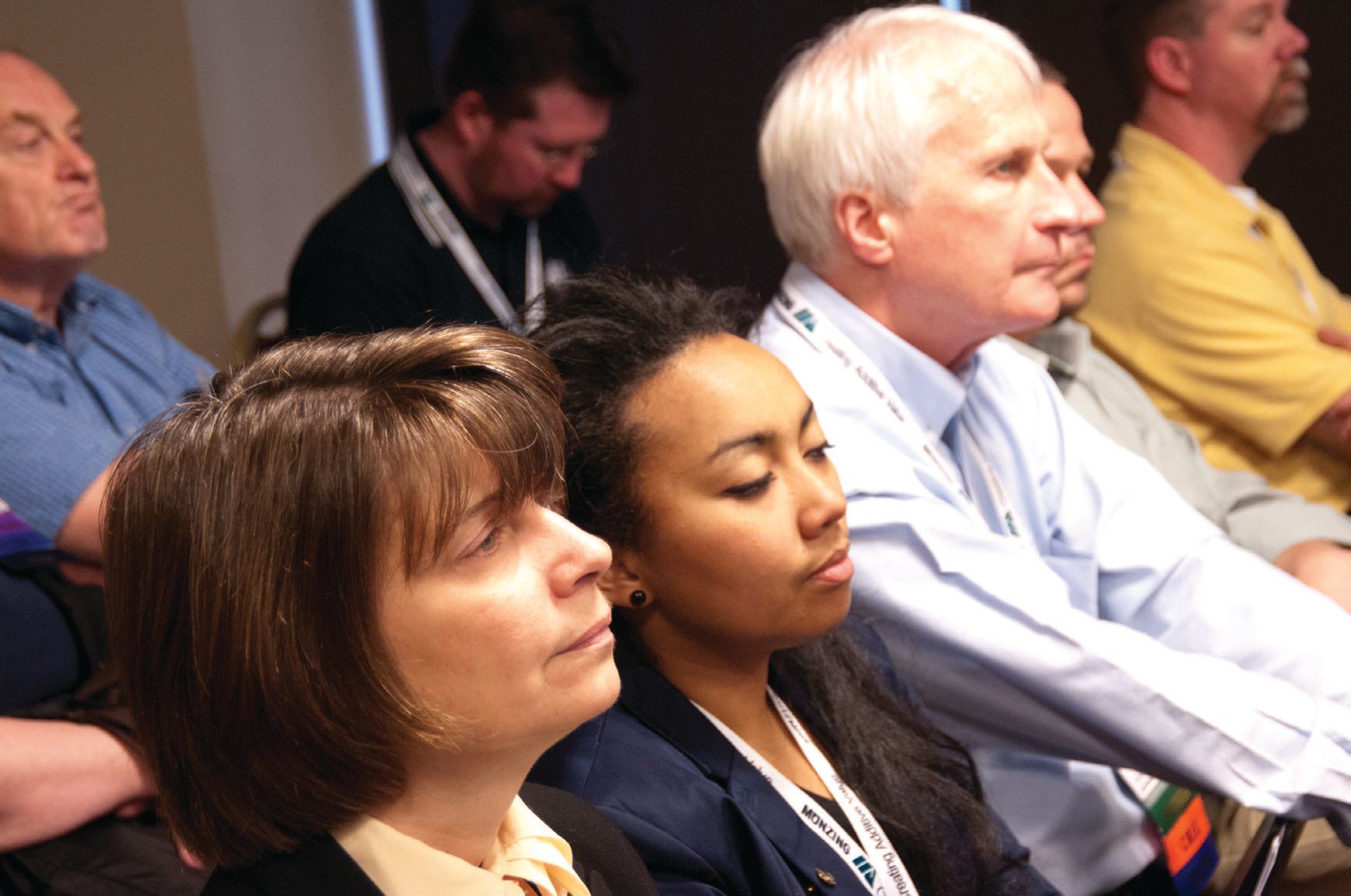
STLE HELD TWO PANEL-DISCUSSION WEBINARS IN JANUARY AND FEBRUARY FOR LARGE AND SMALL LOCAL SECTIONS that addressed what our groups are doing to draw and retain members. The discussions were wide-ranging and examined the events and programs sections provide.
These sharing sessions were geared toward providing new ideas for sections and meetings. The recordings of these events are available under the Local Section tab at
www.stle.org.
Below are some highlights from the two Webinars.
MEMBERSHIP
Two strategies are important to membership: monitoring and retaining
existing membership and evaluating what you’re doing to recruit and retain
new members.
The key is to be aware. Know who is attending your meeting. Identify and welcome new attendees at the meeting. Follow up within a couple of weeks to get feedback, and use this opportunity to get ideas about what they’re looking for from the section (ideas for technical talks) and why they might or might not attend in the future. Try to match new members with a colleague with similar research interests or job function; this could become a member-matching or mentoring system. To maintain attendance, keep in touch with current members, monitoring their interests and needs. If you notice a decrease in attendance, see if changing the format (topics, date/timing, lunch, dinner or midday) makes a difference. Remember,
do what works for your members.
If you want to increase your membership, look to sources of new members—companies, colleagues and business contacts, customers, vendors and so on. Find out what they’re looking for and take that into account when planning your meetings.
Provide incentives. While networking and technical information are great motivators, you can try new strategies to increase attendance. Try a drawing or door prize for those who stay for the whole meeting. This could include free future meeting attendance or meal, gift cards, trinkets, STLE products or a 50/50 draw where the section keeps half the ticket sales and the winner the other.
For existing members you haven’t seen in awhile, put them into a monthly drawing for a free meeting attendance in the future. If they bring a new member, reimburse their dinner fee or give them a future attendance. You also could award gifts for those who attend the most meetings in a year. As a side note, rewards are a better way of motivating people to attend instead of punitive measures (i.e., not refunding their registration fee if they have to cancel at the last minute). You also want to motivate non-members to join in the form of a price differential in meeting registration fees. After all, membership does have its benefits.
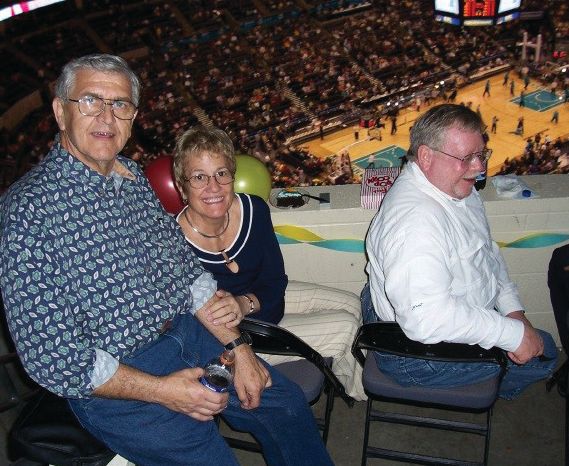 Social events have included theater events, lake cruises, comedy clubs and sporting events.
TECHNICAL PROGRAMMING
Social events have included theater events, lake cruises, comedy clubs and sporting events.
TECHNICAL PROGRAMMING
When scheduling your technical program for the year, keep your audience in mind. Two things will motivate them: when and if they can attend and their interest in the topic.
Format. Again, this comes down to local needs and wants. If your audience is interested in doing a lunch, a cocktail hour with dinner or even a midday meeting where they just attend a technical talk,
give them what they want. If attendance is decreasing, consider changing the format (go from dinner to a lunch), or try many different formats and see which is well attended. Typical locations are restaurants or hotels, but you have more options if you consider having a meeting without food (midday).
If your membership is geographically diverse, try broadcasting your technical talk (via a Webinar format) to those who cannot attend. You can charge a minimal or similar fee, but the member still gets the benefit of attending, even if he or she is unable to get to the meeting location. These broadcasts also can be provided to student chapters with an eye toward future membership in the local section. If you're interested, STLE has a WebEx Event Center, which you could utilize to record presentations for free. The recordings could be posted on your section's Website for members or on the main STLE homepage.
In addition, if you want to broadcast the meeting in real-time, STLE also has a Meeting Center, but it carries usage fees. There are many other forms of Webinar software available or you can conduct your own search to find what works best for you. If you would like to move forward with recording or broadcasting your local section meeting, contact Bruce Murgueitio, STLE's digital marketing manager, at
bmurgueitio@stle.org.
Topics. Utilize various forms of surveys to discover your audience’s challenges and concerns. Then figure out how to solve those issues through programming.
You can utilize your leadership and your audience to get to the root of the question. Have a discussion with your executive board on industry trends and issues, and make sure you get a good mix of topics.
You also can go direct to the members—send out an electronic survey using any of the free programs available online. Conduct regular surveys at meetings that can be written or verbal (you could provide incentives for completing the survey) and by contacting your members (phone calls, e-mails, etc.). Staying in touch with their needs and providing value is what gets them to come back. You can also try co-hosting meetings with similar technical societies. This is a way to grow membership, get at a new audience and provide topics that are relevant to both audiences.
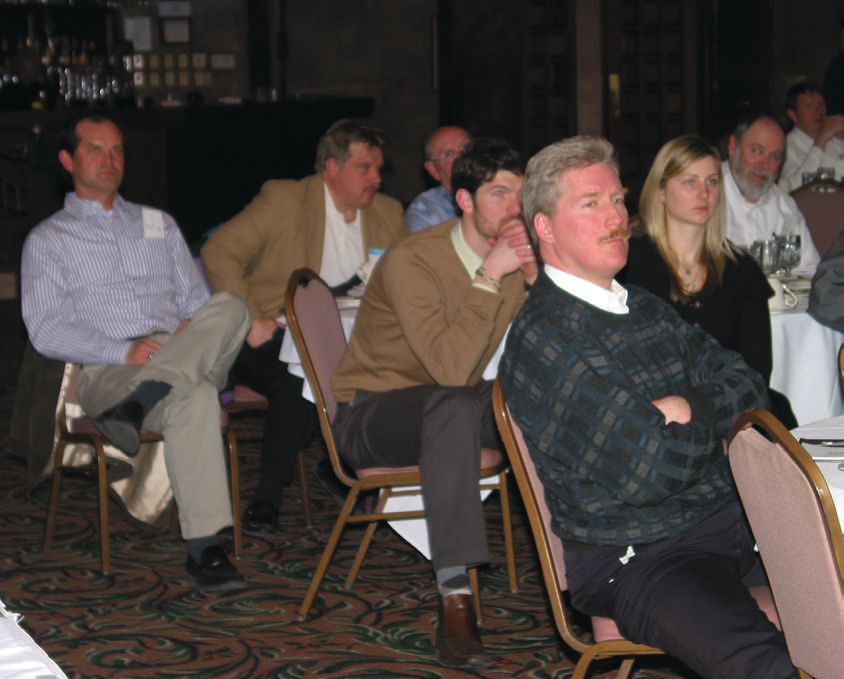 You can also co-host meetings with similar technical societies.
PLANT TOURS
You can also co-host meetings with similar technical societies.
PLANT TOURS
To find a facility that’s willing to have tours, tap into your executive board and membership. If they make a suggestion, they’ll know of any prerequisites for attendees. Ensure that plant tours vary from year to year; trying different types of facilities and companies typically results in a good turnout.
You can set up the tour on its own or in conjunction with a technical talk. The talk can take place at the facility or off-site and can be given by someone from the toured facility or by an unrelated party on a similar topic to the tour. You can encourage membership growth if you tie the technical talk into the tour subject matter, as those who come for the tour might stay for the meeting and vice versa.
SOCIAL EVENTS
Some sections offer social events to their membership or have a social event for their executive board only as a volunteer reward. The goal is to get to know each other, and this can be a natural extension of the technical meetings.
You can take this time to welcome new members and kick off the mentor relationship or member matching (depending on when you schedule your social event). This also is a good time to find future volunteers. Past social events have included theater events, lake cruises, comedy clubs and sporting events. For example, STLE’s Alberta Section organized a successful event that featured a comedy hypnotist. The golf outing could be considered a social event, but it is often used as a fundraising event, so sections may host one or both.
EDUCATION DAY
The typical format for an education seminar is a one- or two-day program with a variety of speakers. To draw an audience, most sections offer two tracks: one covering basics/fundamentals and another focusing on more advanced subjects.
You can utilize the same location as your monthly technical meetings, or you can look to other, more unique locations. These unique location suggestions would come from your executive board or membership and will vary based on your location.
A typical time of year to hold the seminar is March or April. The charge for attendees varies, but there is a price difference for members versus nonmembers. The non-member fee includes a year of membership, allowing you to recruit members. If you hold your seminar at the same time each year, members also can use the seminar to renew their membership.
To keep course costs down or to provide extra value, look for sponsors. Companies can sponsor course materials like flash drives or course books, allowing attendees to have access to the course content after the event and providing exposure for the sponsor.
In conjunction with your seminar, you can opt to hold other events like a certification exam sitting for STLE’s CLS, CMFS or OMA designations. The education seminar counts toward recertification requirements, so if you are already hosting exam sittings, you could potentially increase your audience looking for recertification credits. For more information on certification exams and to schedule a sitting, contact STLE certification exams administrator Alicia Shearer at
ashearer@stle.org.
You also can coordinate a technical talk on the night of the education seminar, as you’ll have a good number of non-members who could join the section. In lieu of a technical talk, you could host a social event such as a dinner or cocktail hour for attendees to get to know one another.
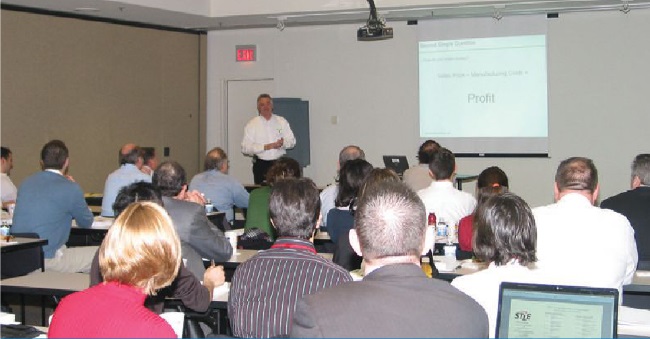 The typical format for an education seminar is a one- or two-day program with a variety of speakers.
VOLUNTEERS & LEADERSHIP
The typical format for an education seminar is a one- or two-day program with a variety of speakers.
VOLUNTEERS & LEADERSHIP
Utilize both current and new members. If you get both existing and new membership, you’ll have a variety of perspectives and better insights into what your membership wants. In order to find those volunteers, you can look to existing and new members. Start by tapping members who regularly attend. You could start with small tasks or jobs and work them up to a spot on the executive board. You also could use them to identify potential or up-and-coming leaders. Once they bring the new member/volunteer to the meeting, they would be set up as the new member’s mentor, demonstrating future duties and expectations. New members provide a fresh perspective, and this perspective tends to help draw new faces to meetings.
When welcoming attendees or new members, offer volunteer opportunities if they seem open to it. They may want to volunteer but simply haven’t been asked yet. Also, try to match volunteering opportunities to their interests. Volunteers want to get something out of their service, so keep that in mind as you set up your volunteer opportunities and make offers.
Finally, the clearer you are about what the position requires, the better the results. You may want to have a chat with the volunteer ahead of time to ensure you manage expectations on both sides.
Volunteer positions and orientation. Get volunteers to rotate through the positions on the board. The progression typically is: treasurer, secretary, vice chair and chair. You also want to look for board members to serve as chairs of your various committees: program, membership, social activities and special projects (education).
Encourage existing volunteers to find their replacement, perhaps having the new volunteers serve as co-chairs for a while. This allows new volunteers to observe the current volunteer, test out the position and take over when the time comes. Let current volunteers know this will cut their work in half. This also provides the section with a future leader already trained and willing to serve.
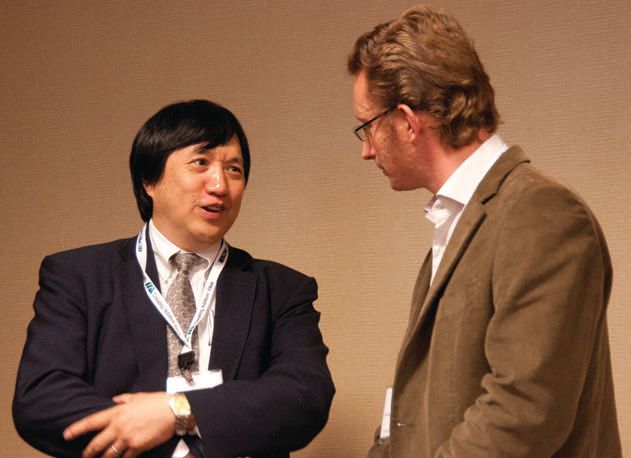 Most important—do what works for your members.
SCHOLARSHIPS
Most important—do what works for your members.
SCHOLARSHIPS
For students sections can offer special pricing to attend their education seminar or monthly technical meetings. This provides discounted education and a preview of their future employment. In addition, consider offering scholarships to students at local universities. Determine the amount you can contribute in a given year and coordinate with university faculty or the department head to start the process and set up criteria.
SPONSORS
Companies can contribute in a number of ways, and there is no limit on the types of sponsorships you can create or offer. Whatever form their sponsorship takes, be sure you acknowledge the sponsor’s contribution. You can do this in a number of ways, including on your Web site, in publications or as a rotating feature on slides before the technical talk (during the cocktail hour or as people arrive).
Advertising. You can utilize traditional advertising options in section publications like a directory, newsletter, meeting schedule/calendar or on the section’s Web site.
Meeting sponsorship. Sponsors can cover the cost of a venue that you’ve arranged or supply the venue for your monthly meeting (their facility). They can sponsor one meeting or the entire program for the year. For the golf outing, companies can sponsor the event as a whole or anything associated with the event including golf holes and door prizes.
Reuse content. You can reuse the content your section generates and find sponsors for this offering. Speakers typically use slides, and most of your attendees would like to have a copy to share with colleagues or for future reference. Consider printing or providing an e-book, which includes the speaker’s contact information and slides and any additional notes the speaker cares to provide. Working with the speaker to create a white paper from their event and provide that to members also is a possibility. Companies can sponsor this like a member directory or any other section publication.
ONLINE ACTIVITIES
Create a Website. Post whatever information you’d like to share, including information about your section, the upcoming meeting schedule, presentation slides and photos from your meetings (encourage members to take photos or assign a volunteer). This can be used to provide a history of section activities (meetings, social events, officers, etc.).
If a Web site is not in your budget, try a blog. There are many how-to articles on setting up a blog and free sites available. Plus, blogs are easy to track, and you can keep members updated through an e-mail subscription or RSS feed whenever you post something new.
Monthly newsletter. The newsletter can be online or print. If online, you can post it on your Website (along with archives of past newsletters) or email to members. If using e-mail, stick to a schedule so you don’t bombard members with e-mails they don’t want. Be concise and try to target members’ interests when sending any kind of communication.
CONCLUSION
The panelists all agreed that to be successful, you must find out your members’ interests and do what you can as a section to offer solutions to problems, provide ideas and keep them updated on the industry. Local sections have great insight into local needs and concerns, so use that to your advantage.
Create programming around your members’ interests, and keep asking what matters to them most. As long as you provide value, they will come.
 You can reach Kara Sniegowski, STLE’s education manager, at klemar@stle.org
You can reach Kara Sniegowski, STLE’s education manager, at klemar@stle.org.